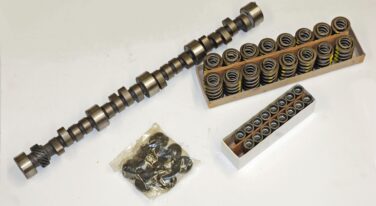
The Basics of Limited-Slip Differential Performance
Click Here to Begin slideshow
We’ve made a great deal of progress with differentials since the 1970s, 1980s, and even the 1990s. Days of running a spool - also known as a locked differential - to manage big power are well behind us, as are the times when drivers could use their aggressive throttle technique to dramatically turn a car and hold on by the scruff of its neck. Differentials have various uses, but in this instance, we’ll talk about how they are used to make a car corner quickly and safely.
Cars nowadays are outfitted with differentials that are specialized, sensitive, and adjustable. They can be tuned to get a car to find that perfect medium between stability and incisiveness. In other words, they help a car move through a corner without too much oversteer or understeer, and they should be viewed through the variables of acceleration lockup, deceleration lockup, and preload.
What lockup basically refers to is how closely two driven wheels on a shared axle will spin to one another’s speed. Since the inside and outside wheels travel over different lines and are sometimes subjected to different cornering forces, they will naturally rotate at different speeds. The limited-slip differential’s job is to limit how much these two vary in their rotational speeds. Basically, when two wheels spin more-or-less at the same speed, they can provide certain handling traits, like understeer or oversteer, depending on which axle they are attached to, and sometimes having them spin at slightly different speeds is preferable.
We’ve made a great deal of progress with differentials since the 1970s, 1980s, and even the 1990s. Days of running a spool - also known as a locked differential - to manage big power are well behind us, as are the times when drivers could use their aggressive throttle technique to dramatically turn a car and hold on by the scruff of its neck. Differentials have various uses, but in this instance, we’ll talk about how they are used to make a car corner quickly and safely.
Cars nowadays are outfitted with differentials that are specialized, sensitive, and adjustable. They can be tuned to get a car to find that perfect medium between stability and incisiveness. In other words, they help a car move through a corner without too much oversteer or understeer, and they should be viewed through the variables of acceleration lockup, deceleration lockup, and preload.
What lockup basically refers to is how closely two driven wheels on a shared axle will spin to one another’s speed. Since the inside and outside wheels travel over different lines and are sometimes subjected to different cornering forces, they will naturally rotate at different speeds. The limited-slip differential’s job is to limit how much these two vary in their rotational speeds. Basically, when two wheels spin more-or-less at the same speed, they can provide certain handling traits, like understeer or oversteer, depending on which axle they are attached to, and sometimes having them spin at slightly different speeds is preferable.



![[Gallery] Okolona Street Rods Kentuckiana V Foundation Car Show](https://www.racingjunk.com/news/wp-content/uploads/2022/04/IMG_0774-e1650040587750-376x206.jpg)
![[Gallery] Road Rats Car Show](https://www.racingjunk.com/news/wp-content/uploads/2022/05/2A-e1651770667920-376x206.jpg)

Leave a Reply